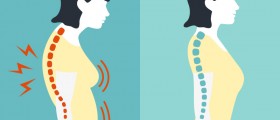
Chronic abdominal pain in children is normally attributable to functional rather than organic problems. There can also be a lack of knowledge and numerous misconceptions about the true nature of the problem amongst medical professionals. This can in some cases lead to ineffective management of the problem. In most cases, abdominal pain occurs without the presence of any anatomic, metabolic, infectious, inflammatory or neoplastic disorders. Instead, abdominal pain is thought to occur mainly as a result of abnormalities in the enteric nervous system.
About abdominal pain
Recently, theories have proposed that abdominal pain occurs as a result of the bowels’ reaction to certain types of stimuli. For example, stimuli such as gut distension, food or hormonal changes. Noxious stressful stimuli or psychological stressful stimuli might also lead to this type of pain. Adult patients are often discovered to have some kind of psychological disturbances. It is thus proposed that psychological factors can have an important role to play with regard to the onset of this condition. It is also thought that a decreased pain threshold in response to intraluminal pressure might result in abdominal pain. In addition to this, many mucosal inflammatory diseases have been associated with this lowered pain threshold, known as visceral hyperalgesia. It is also possible that an abnormal central processing of afferent signals at the level of the central nervous system might play a role in the development of this condition.
Children with abdominal pain are normally more anxious or depressed than their peers. This fact has not thus far been proven to be relevant with regard to distinguishing between functional abdominal pain and abdominal pain related to organic disease.
Treatment and testing
Testing can help to reassure the patient and his or her loved ones. Examination is best carried out in the context of a biopsychosocial model of care. It is important to address psychological factors related to the condition. Education of the family is also an important part of the treatment process. It might be useful to point out in the case of functional abdominal pain that despite the reality of the pain, there is generally no underlying disease or serious disorder.
The main aim of treatment should be to return the patient to normal function as soon as possible. Medication for this problem are best prescribed as part of an individualized approach to symptomatic relief. Time-limited use of medication might prove particularly beneficial in this regard.












_f_280x120.jpg)




Your thoughts on this
Loading...